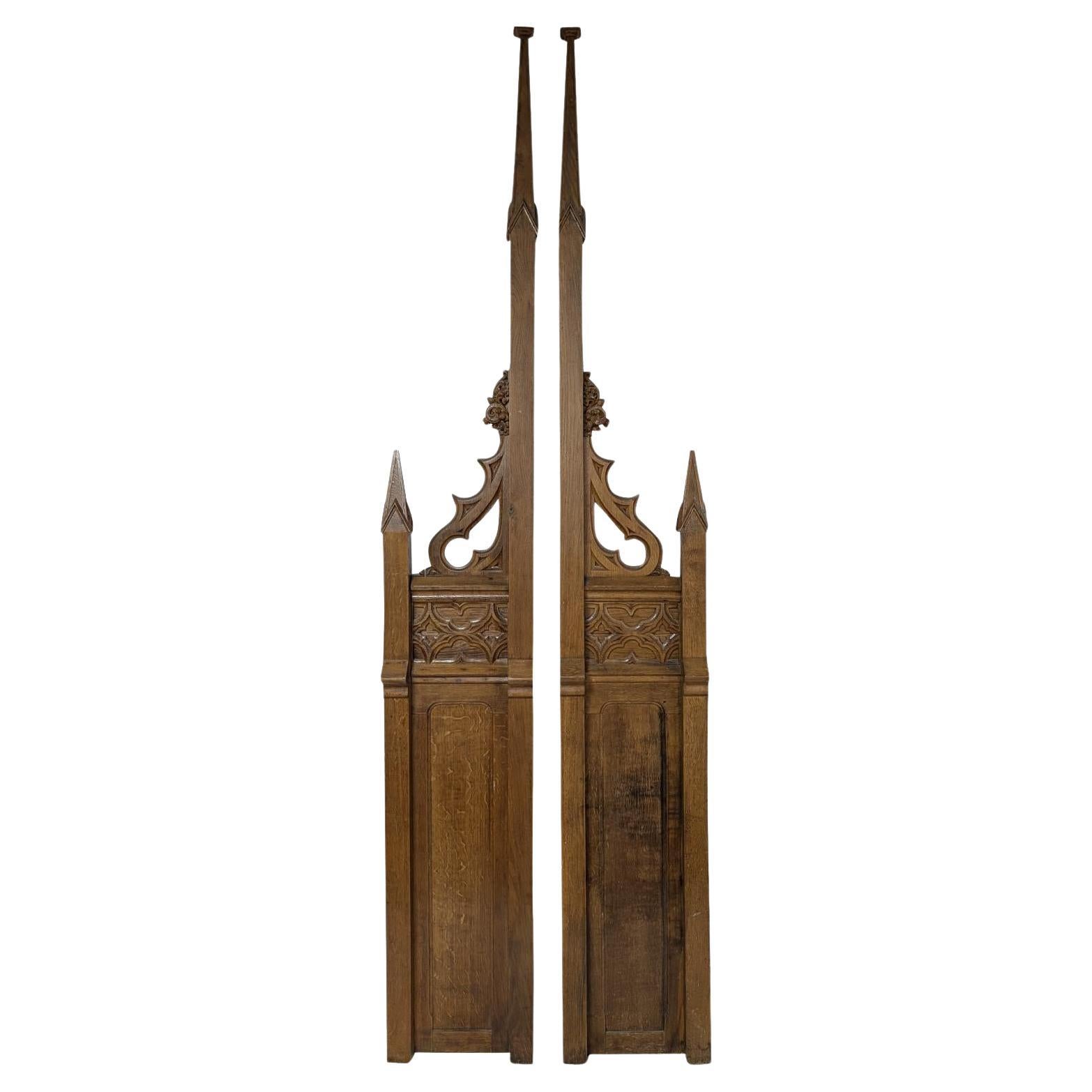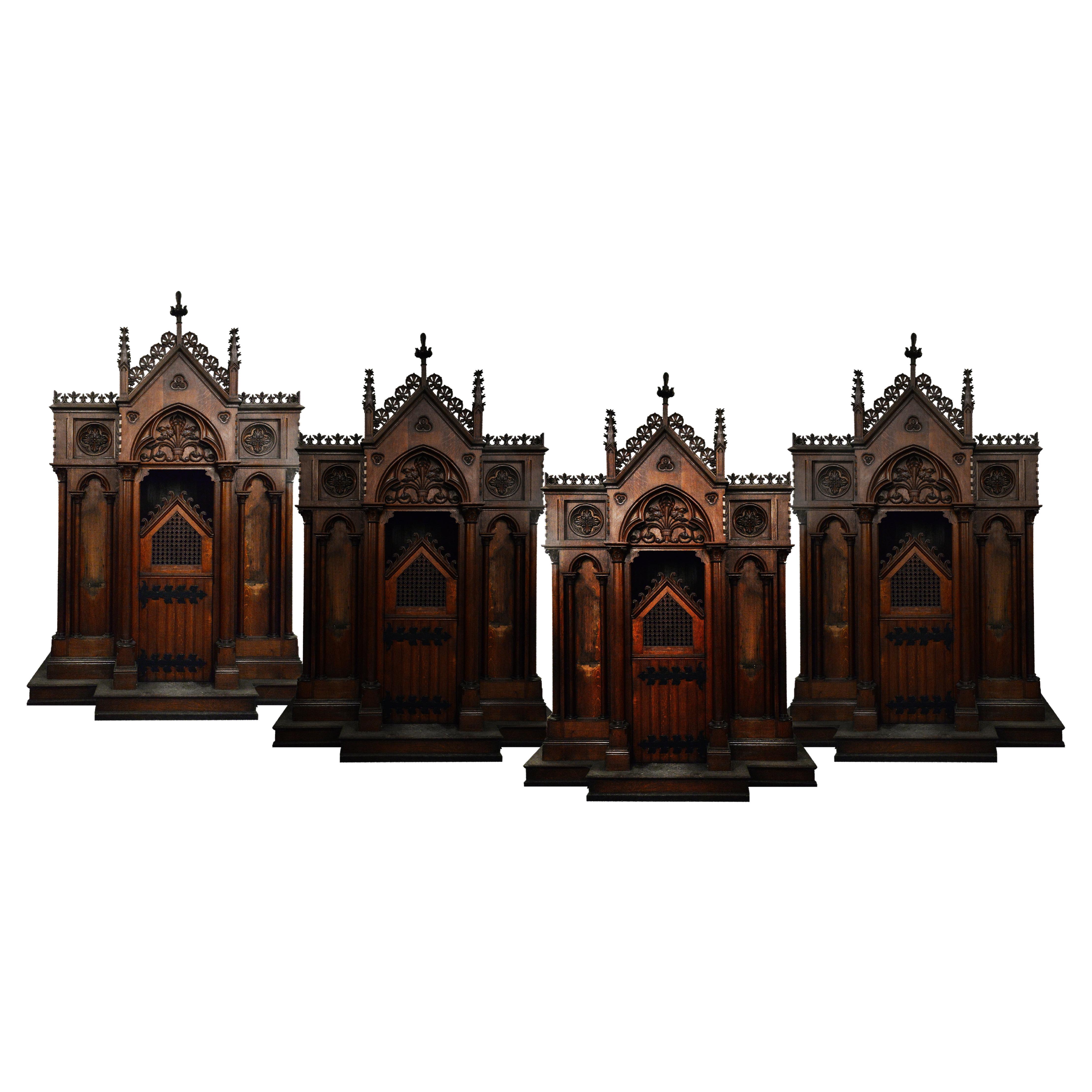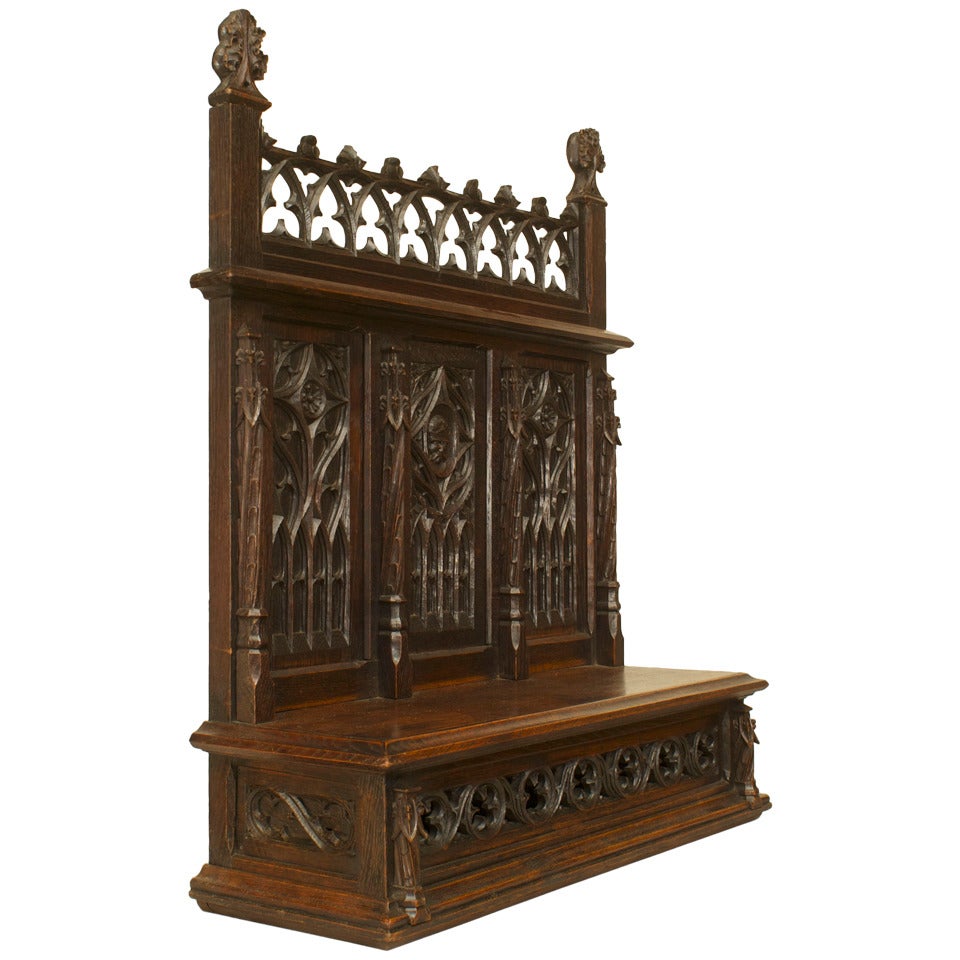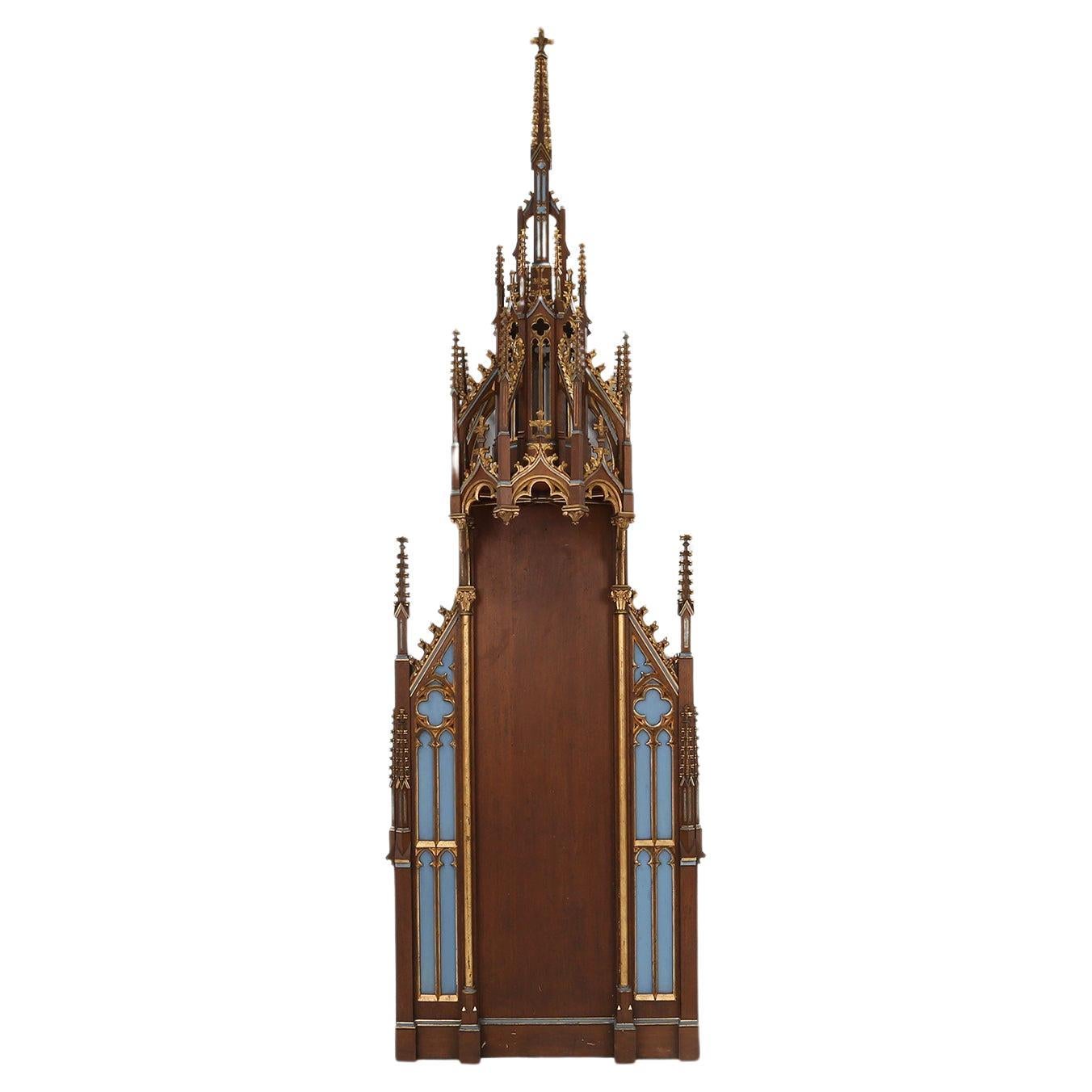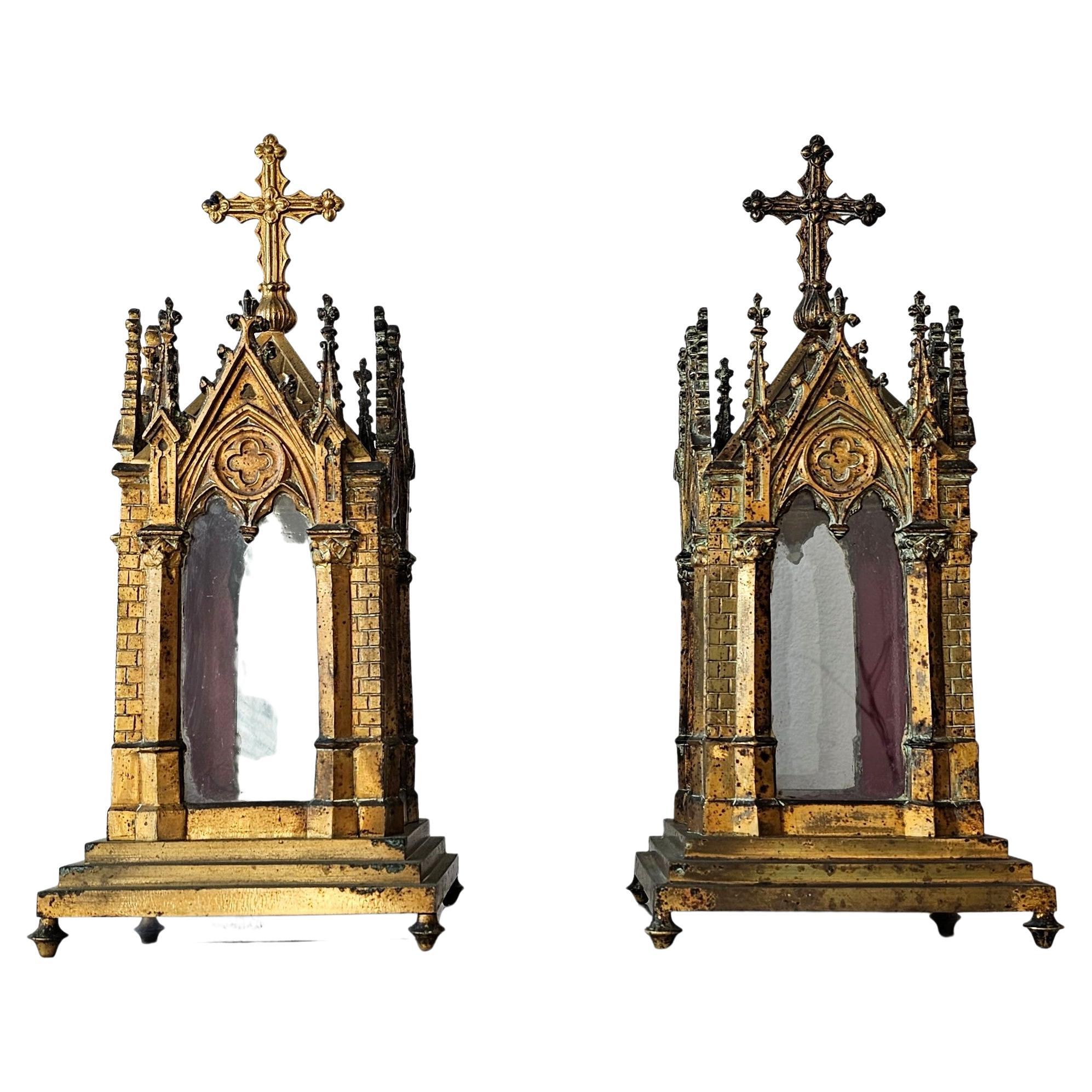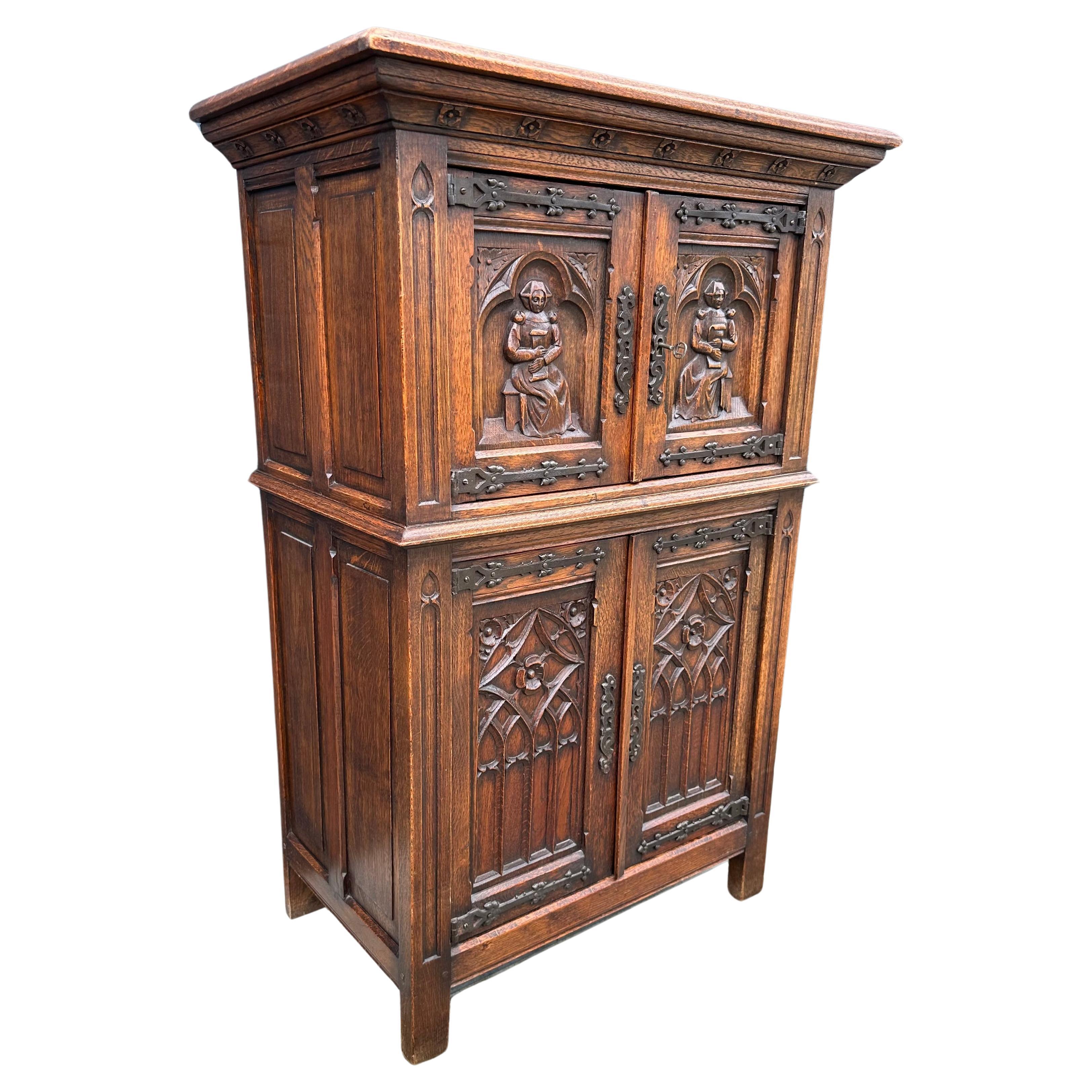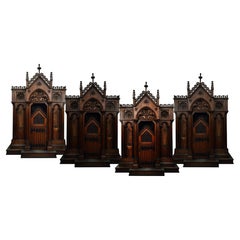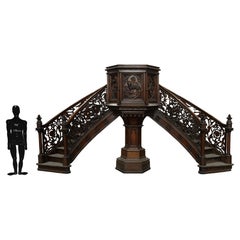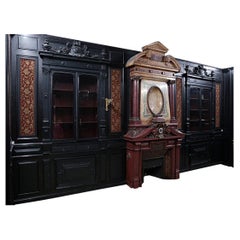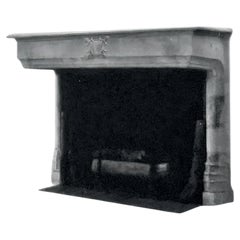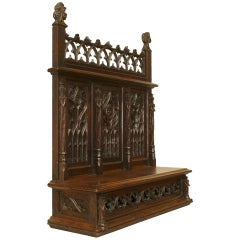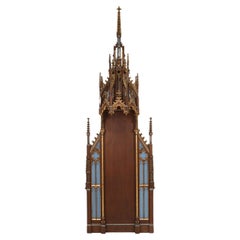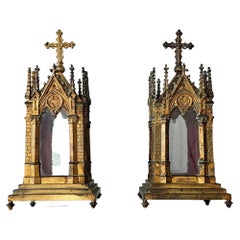Items Similar to Pair of Old Oak Church Altars in the Neo-Gothic Style
Want more images or videos?
Request additional images or videos from the seller
1 of 9
Pair of Old Oak Church Altars in the Neo-Gothic Style
$50,507.49
£36,763.85
€42,000
CA$68,745.80
A$76,896.49
CHF 40,017.39
MX$946,622.07
NOK 509,104.10
SEK 477,640.01
DKK 319,629.14
Shipping
Retrieving quote...The 1stDibs Promise:
Authenticity Guarantee,
Money-Back Guarantee,
24-Hour Cancellation
About the Item
Pair of antique Neo-Gothic style oak church altars.
- Dimensions:Height: 200.79 in (510 cm)Width: 120.08 in (305 cm)Depth: 82.68 in (210 cm)
- Style:Gothic Revival (Of the Period)
- Materials and Techniques:
- Place of Origin:
- Period:
- Date of Manufacture:1880
- Condition:
- Seller Location:SAINT-OUEN-SUR-SEINE, FR
- Reference Number:Seller: 122511stDibs: LU7662232123952
About the Seller
No Reviews Yet
Recognized Seller
These prestigious sellers are industry leaders and represent the highest echelon for item quality and design.
1stDibs seller since 2022
Typical response time: 8 hours
- ShippingRetrieving quote...Shipping from: SAINT-OUEN-SUR-SEINE, France
- Return Policy
Authenticity Guarantee
In the unlikely event there’s an issue with an item’s authenticity, contact us within 1 year for a full refund. DetailsMoney-Back Guarantee
If your item is not as described, is damaged in transit, or does not arrive, contact us within 7 days for a full refund. Details24-Hour Cancellation
You have a 24-hour grace period in which to reconsider your purchase, with no questions asked.Vetted Professional Sellers
Our world-class sellers must adhere to strict standards for service and quality, maintaining the integrity of our listings.Price-Match Guarantee
If you find that a seller listed the same item for a lower price elsewhere, we’ll match it.Trusted Global Delivery
Our best-in-class carrier network provides specialized shipping options worldwide, including custom delivery.More From This Seller
View AllSet of Four Monumental Neo-Gothic Confessionals in Oak
Located in SAINT-OUEN-SUR-SEINE, FR
A group of four antique confessionals in Neo-Gothic style, made of oak.
Category
Antique 19th Century Belgian Gothic Revival Architectural Elements
Materials
Wood, Oak
Neo-Gothic style preaching pulpit in oak
Located in SAINT-OUEN-SUR-SEINE, FR
Pulpit in oak with double flight of stairs richly carved with monsters.
Category
Antique 19th Century Belgian Gothic Revival Balustrades and Fixtures
Materials
Oak
Louis XVI Style Panelling with Louis XVI Period Mantel and Trumeau
Located in SAINT-OUEN-SUR-SEINE, FR
Rare Napoleon III style paneled room in blackened wood (stained beech) with its fireplace in stucco in imitation of porphyry.
The fireplace, which is the centerpiece of this paneled...
Category
20th Century French Napoleon III Panelling
Materials
Bronze
Important stone mantel from the 17th century
Located in SAINT-OUEN-SUR-SEINE, FR
This monumental mantel was made of stone in the 17th century.
Its moulded entablature, adorned with a crest in a Gothic inspired decor, comes in proj...
Category
Antique 17th Century French Gothic Fireplaces and Mantels
Materials
Stone
Monumental Oak Fireplace, 19th Century
Located in SAINT-OUEN-SUR-SEINE, FR
Antique oak wood fireplace inspired by the fireplace in the Hercules Salon in Versailles Palace.
This antique Regence style fireplace was made out of carved oak wood in the late 19th...
Category
Antique Late 19th Century French Regency Fireplaces and Mantels
Materials
Oak
Large Oak Antique Mantel with Hood from a Chateau
Located in SAINT-OUEN-SUR-SEINE, FR
This exceptional Neo-Renaissance style fireplace comes from the Péclavé castle in the town of Samazan in the Aquitaine region. The castle b...
Category
Antique 1860s French Renaissance Revival Fireplaces and Mantels
Materials
Oak
You May Also Like
Early 19th Century Pair of Oak Gothic Revival Architectural Pieces
Located in Oakwood, GA
Early 19th Century Pair of Gothic Revival Architectural Pieces, Oak,
Gorgeous pieces!
Set of 2
Gothic Revival
Architectural Salvage pieces
Possibly from a church
Solid Oak
These pi...
Category
Antique 19th Century European Gothic Revival Architectural Elements
Materials
Oak
English Gothic Oak Altar
Located in Queens, NY
English Gothic style (19th Cent) dark oak table top altar with a filigree shelf under 3 tracery carved panels with an open lattice gallery
Category
Antique 19th Century British Religious Items
Materials
Oak
$3,500
A French wooden neo-Gothic steeple with niche for saint statue, ca. 1800
Located in Meulebeke, BE
France / 1800 / Neo-Gothic steeple with niche for saint statue / wood / Neo-Gothic / 19t century
A very rare and large antique Neo-Gothic church steeple with niche for saint statue....
Category
Antique Early 1800s French Gothic Revival Religious Items
Materials
Wood
Fine 19th Century French Neo-Gothic Gilt Metal Cathedral Church Reliquary Pair
Located in Forney, TX
A stunning pair of very fine quality French Neo-Gothic gilt metal church reliquaries. circa 1860s
Most impressive objets d’art, born in France in the second half of the 19th century, most likely Parisian gilded bronze and brass ormolu work, exceptionally executed sculptural form, the exquisitely detailed architectural cathedral shaped case having a removable pointed steeple roof with cross finial, opening to relic display case surrounded on all sides by original glazed glass panes, stepped base, rising on disc feet. Signed, stamped by maker / bronzier "BC" (unknown) model "5096" and other faint marks to lid interiors.
Additional photos available upon request
Dimensions: (approx)
14.75" High, 6.75" Wide, 6.75" Deep; 13.25 lbs total
History:
A reliquary (also referred to as a shrine, by the French term châsse or monstrance) is a container for important religious relics.
The earliest reliquaries were essentially boxes, either simply box-shaped or based on an architectural design, taking the form of a model of a church with a pitched roof. These latter are known by the French term chasse, and typical examples from the 12th to 14th century have wooden frameworks with gilt-copper plaques nailed on, decorated in champlevé enamel. Limoges was the largest production centre; NB the English usage differs from that of the French châsse, which denotes large size rather than shape.
Relics of the True Cross became very popular from the 9th century onward and were housed in magnificent gold and silver cross-shaped reliquaries decorated with enamels and precious stones. From about the end of the 10th century, reliquaries in the shape of the relics they housed also became popular; hence, for instance, the skull of Pope Alexander I was housed in a head-shaped reliquary. Similarly, the bones of saints were often housed in reliquaries that recalled the shape of the original body part, such as an arm or a foot.
A philatory is a transparent reliquary designed to contain and exhibit the bones and relics of saints. This style of reliquary has a viewing portal to view the relic inside. The feretrum was a medieval form of reliquary or shrine containing the sacred effigies and relics of a saint.
During the later Middle Ages, the monstrance form, primarily used for consecrated hosts, was sometimes used for reliquaries. These housed the relic in a rock crystal, or glass capsule mounted on a column above a base, enabling the relic to be displayed to the faithful. Reliquaries in the form of large pieces of metalwork jewellery also appeared around this time, housing tiny relics such as pieces of the Holy Thorn, notably the Holy Thorn Reliquary now in the British Museum.
Condition:
Superb museum quality examples, in excellent original unrestored antique condition with beautifully aged patina. Wear consistent with age and use. Heavily patinated - scattered oxidation. Overall wonderful examples.
Typically reliquaries were not sold in pairs, so to find a matching pair such as this is exceptionally rare.
Worldwide shipping available
Local pickup available near Dallas, Texas
Additional:
We here at Lynx Hollow Antiques love religious antiques, from Christian tabernacles, Catholic altarpiece, life-size Buddhist temple sculptures, Hindu votive offerings, 16th century Islamic mosque architectural salvaged windows...
Category
Antique Mid-19th Century French Gothic Revival Religious Items
Materials
Brass, Bronze
Sizeable & Meaningful Gothic Revival Cabinet w. Nun Sculptures & Church Windows
Located in Lisse, NL
Early 20th century, solid oak Gothic cabinet with hand carved church window panels.
This beautifully and deeply carved oak cabinet from the early 1900s is in excellent condition. It...
Category
Early 20th Century Dutch Gothic Revival Sideboards
Materials
Wrought Iron, Metal
19th Century French Two-Piece Gothic Style Oak Cabinet
Located in Milford, NH
A fine form two-piece oak Gothic style cabinet in old dark finish with trefoil lined crest surmounting an upper tracery gallery back, over a singl...
Category
Antique Early 19th Century French Gothic Revival Cabinets
Materials
Oak
More Ways To Browse
Gothic Architecture
Gothic Church
Gothic Church Furniture
Church Altar
Antique Belgian Oak
Neo Gothic Furniture
Antique Church Altars
Gothic Altar
Oak Altar
Belgian Gothic Revival
Greenhouse On Wheels
Horse And Carriage Weathervane
Limestone Spires
Lion Downspouts
Pk 111
Ruth Richmond Knobs
Schlage Sahara
Trondur Patursson
